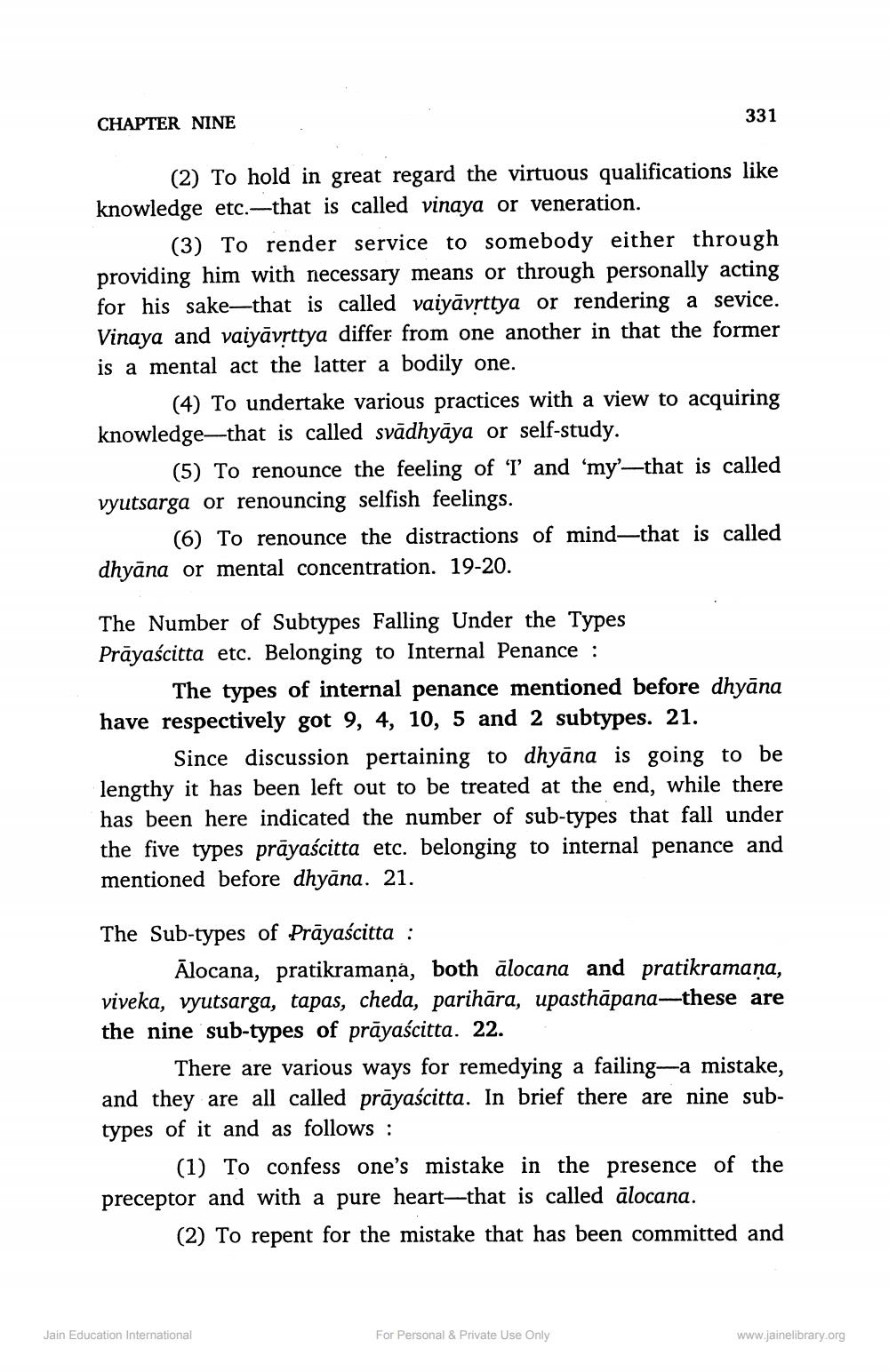________________
CHAPTER NINE
331
(2) To hold in great regard the virtuous qualifications like knowledge etc.--that is called vinaya or veneration.
(3) To render service to somebody either through providing him with necessary means or through personally acting for his sake—that is called vaiyāvsttya or rendering a sevice. Vinaya and vaiyāvsttya differ from one another in that the former is a mental act the latter a bodily one.
(4) To undertake various practices with a view to acquiring knowledge—that is called svādhyāya or self-study.
(5) To renounce the feeling of l' and 'my'—that is called vyutsarga or renouncing selfish feelings.
(6) To renounce the distractions of mind that is called dhyāna or mental concentration. 19-20.
The Number of Subtypes Falling Under the Types Prāyaścitta etc. Belonging to Internal Penance :
The types of internal penance mentioned before dhyāna have respectively got 9, 4, 10, 5 and 2 subtypes. 21.
Since discussion pertaining to dhyāna is going to be lengthy it has been left out to be treated at the end, while there has been here indicated the number of sub-types that fall under the five types prāyaścitta etc. belonging to internal penance and mentioned before dhyāna. 21.
The Sub-types of Prāyaścitta :
Alocana, pratikramañá, both ālocana and pratikramana, viveka, vyutsarga, tapas, cheda, parihāra, upasthāpana—these are the nine sub-types of prāyaścitta. 22.
There are various ways for remedying a failing-a mistake, and they are all called prāyaścitta. In brief there are nine subtypes of it and as follows :
(1) To confess one's mistake in the presence of the preceptor and with a pure heart—that is called alocana.
(2) To repent for the mistake that has been committed and
Jain Education International
For Personal & Private Use Only
www.jainelibrary.org




